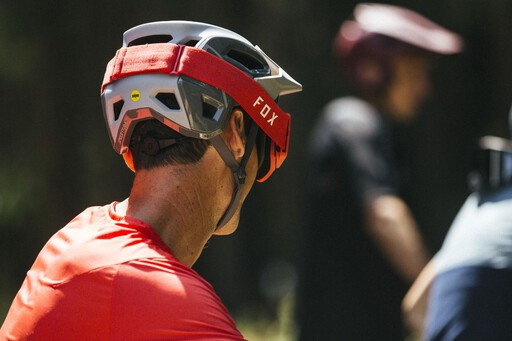Revolutionizing Riding: Integrating Tech in MTB Helmets

Key Point Summary of Integrating Tech in MTB Helmets:
- Innovative Features in Tech MTB Helmets: Exploring how technology enhances safety and experience.
- Types of Smart Helmets and Their Capabilities: Understanding different smart helmets and what they offer.
- Real-Life Application and Benefits: How tech integration in helmets benefits cyclists of all levels.
As a seasoned masters cyclist with a passion for racing and riding across various terrains, from mountain biking to gravel and cyclocross, I’ve witnessed firsthand the evolution of cycling gear. In this article, I’ll dive into the world of tech-integrated MTB helmets – an exciting frontier in cycling gadgets. These innovative helmets are not just protective gear; they are a fusion of safety and technology, designed to enhance the riding experience for cyclists at all levels.
Innovative Features in Tech MTB Helmets
The integration of technology in MTB helmets has transformed them from mere safety equipment to multifunctional devices. Features like built-in lights, GPS tracking, and even fall detection sensors are becoming standard. For instance, I recently upgraded to a helmet with integrated LED lights. The difference in visibility during dusk rides was remarkable, not just for me but also for making me more visible to others.
Another feature gaining popularity is Bluetooth connectivity. This allows for seamless communication with fellow riders, as well as easy connection to smartphones for music and call handling. It’s a game-changer for group rides, making coordination much simpler.
Types of Smart Helmets and Their Capabilities
1. Helmets with Crash Detection: These helmets come equipped with sensors that detect a crash and can automatically send an SOS message to emergency contacts. I remember a fellow rider who had a minor crash in a remote area. His helmet sent an alert to his emergency contacts, ensuring quick assistance.
2. Helmets with Built-in Cameras: For those who love documenting their rides, helmets with integrated cameras are perfect. They provide a hands-free way to capture your adventures without compromising safety.
3. Fitness-Tracking Helmets: Some tech MTB helmets offer fitness-tracking features, including heart rate monitors and calorie counters. This is particularly useful for riders who are also fitness enthusiasts, looking to track their performance and progress.
Real-Life Application and Benefits
The practical applications of these smart helmets are vast. On a personal note, I’ve found the GPS navigation feature immensely helpful. During a recent mountain biking expedition, the GPS in my helmet helped me navigate unfamiliar trails with ease.
Moreover, the integration of technology in helmets has greatly enhanced safety. Features like rear-view cameras and collision avoidance systems provide an extra layer of security, especially on challenging terrains.
Personal Anecdotes for Relatability
I recall an incident during a night ride when the built-in lights of my helmet proved to be a lifesaver. They not only illuminated the path ahead but also made me visible to a vehicle that was approaching from behind, potentially avoiding a collision.
On another occasion, while riding in a group, the intercom feature in our helmets made communication effortless, especially when warning each other about upcoming obstacles or turns.
Future Trends in Tech MTB Helmets
The future of tech in MTB helmets is as thrilling as a steep downhill trail. We’re looking at potential integrations like augmented reality (AR) for real-time data display, advanced environmental sensors, and even AI-driven safety features. Imagine a helmet that not only navigates but also provides live data about terrain, weather, and your physical state.
Choosing the Right Tech Helmet
For beginners and mid-level cyclists, choosing the right tech helmet can seem daunting. It’s essential to balance the tech features with fundamental helmet qualities like fit, comfort, and safety standards compliance. I always advise fellow riders to prioritize safety features over tech gadgets. A helmet with MIPS or SPIN and a good fit should come before the bells and whistles of technology.
Impact on Training and Performance
For those who are into rigorous training or improving their riding skills, tech helmets can be a valuable tool. Data from fitness tracking can help in monitoring progress, while features like route tracking aid in analyzing and planning training sessions. I’ve used this data to tweak my training regimen, leading to noticeable improvements in my performance.
Safety Beyond Technology
It’s crucial to remember that technology should not replace basic safety practices. Regular helmet maintenance, adherence to cycling rules, and riding within limits are still paramount. Tech helmets are an aid, not a substitute for safe riding practices. Here are some notable brands that are leading the way in incorporating future tech into their helmets:
1. Specialized
- Innovation Focus: Known for integrating advanced technologies in their cycling gear, Specialized is at the cutting edge of helmet design. They are exploring areas like enhanced connectivity features and improved impact protection technologies in their helmets.
2. POC
- Tech Integration: POC is renowned for its focus on safety and has been incorporating technologies like SPIN in its helmets. They are also exploring smart technologies, such as augmented reality and advanced sensor systems, for heightened safety and user experience.
3. Giro
- Future Ready: Giro has a history of innovation in helmet design. They are now focusing on integrating more tech features like Bluetooth connectivity, crash detection sensors, and AR for navigational assistance.
4. Bontrager (Trek)
- Tech Advancements: Bontrager is known for its WaveCel technology, and they are pushing boundaries further by integrating features like lighting, communication systems, and possibly even AI-driven analytics for performance monitoring.
5. Smith Optics
- Smart Tech Focus: Smith is progressively incorporating tech features in their helmets. They are known for their pioneering use of Koroyd and are now moving towards smart helmets with integrated lighting and communication systems.
6. Lumos
- Unique Offering: Lumos specializes in helmets with integrated lights and turn signals, controlled via a wireless handlebar remote. They are continually advancing their tech to include features like automatic brake lights and turn signals for increased rider safety.
Concluding Thoughts
In conclusion, integrating technology into MTB helmets has revolutionized how we approach cycling safety and convenience. These tech-equipped helmets are not just for high-level athletes but offer significant benefits for cyclists at beginner and mid-levels as well. As the technology advances, I am excited to see how it will further enhance our riding experiences and safety.
As I continue to explore different trails and challenges in mountain biking, I am excited by the prospects that tech MTB helmets bring to the sport. They offer a blend of safety, convenience, and performance enhancement that can significantly benefit cyclists of all levels. Embracing these advancements, while staying grounded in essential safety practices, can lead to a more fulfilling and secure cycling experience.
John
FAQ
What is the new technology in mountain bike helmets?
The new technology in mountain bike helmets includes advanced safety features like MIPS (Multi-directional Impact Protection System) and WaveCel for enhanced impact absorption, integrated communication systems using Bluetooth, crash detection sensors, and built-in cameras for recording rides. Some helmets also feature integrated lighting and GPS navigation systems for improved safety and convenience.
Does MIPS technology really work?
Yes, MIPS (Multi-directional Impact Protection System) technology has been shown to be effective. It reduces rotational motion to the brain during an angled impact, potentially lowering the risk of brain injuries. Numerous studies and real-world accident analyses support the effectiveness of MIPS in enhancing helmet safety.
Is WaveCel technology better than MIPS?
WaveCel and MIPS are both advanced helmet safety technologies, but they function differently. MIPS is designed to reduce rotational forces during an impact, while WaveCel aims to cushion both linear and rotational forces. Whether one is better than the other depends on individual preferences and specific impact scenarios. Both offer enhanced protection compared to traditional helmets, but neither is universally superior to the other.






